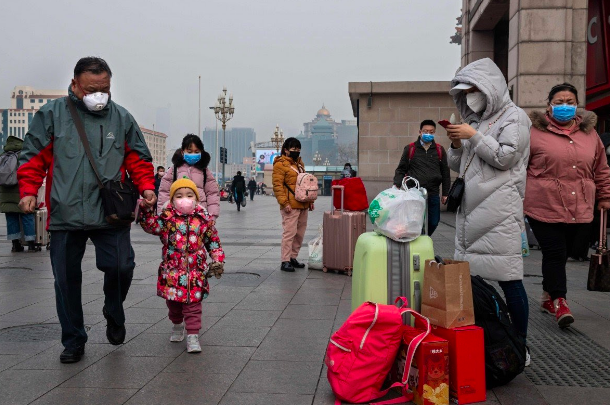By Olivia Capasso || Junior Editor

Photo courtesy of AFP
On February 1st, 2020, the World Health Organization declared the coronavirus outbreak a public health emergency due to its global reach and the fast-moving nature of human-to-human transmission. The current strain of coronavirus, scientifically known as 2019-nCoV, appeared in the city of Wuhan, China, in early December of 2019 where it was observed for the first time in human subjects. According to the Centers for Disease Control and Prevention, the coronavirus is commonly found in various species of animals and, rarely, they will infect humans, making the disease zoonotic. The New York Times reported that the initial cases have been traced back to a market in Wuhan that sold live birds, fish, and animals; the market has since been completely disinfected and shut down. On January 20th, 2020, it was confirmed that humans carrying the coronavirus could transmit it to other humans when the health workers who were treating patients in Wuhan early on tested positive for the disease. According to the World Health Organization, observed symptoms of this illness include a fever, cough, respiratory issues, kidney failure, pneumonia, and, in severe cases, death.
As of February 8th, 2020, there have been 37,137 confirmed cases of the coronavirus worldwide, with a death toll of 806 and 2,633 individuals who have recovered completely from the disease. This unique coronavirus strain has been discovered in 300 cases within 28 different countries outside of China, though the grand majority of cases globally are centralized within the Hubei and neighboring provinces. On February 8th alone, 2,237 more cases were reported and 82 deaths recorded in China. About 6,101 cases are currently classified as “severe,” or under intense supervision, while all but two cases of death have been confirmed outside of China.
According to CBS News, the first American has died from the coronavirus in Wuhan on February 6th. In order to contain the potential for further transmission, US planes carrying Americans traveling from the Chinese city will be quarantined for 14 days until all passengers can be cleared from the disease. Twelve cases have been confirmed as of February 7th within the US, independent of the aforementioned plane incident. Eleven Americans out of 63 cases from the Diamond Princess cruise ship in Japan have also tested positive for the virus and are currently under quarantine aboard the ship. As USA Today reported, several cruise lines have been affected by the outbreak, and, consequently, required to perform a routine screening of its passengers, been denied entry to numerous ports, and forced under additional quarantines. Two schools in France have been shut down while determining who has been infected by one child out of eleven individuals in the country carrying the coronavirus.
As reported by The New York Times, authorities in Hangzhou, a Chinese city with a population of 10 million, have banned all sales of flu and cough medicine. This strategy has been implemented as a means of forcing citizens to visit a doctor for any illness and undergo a thorough examination of symptoms. Additionally, some sections of the city have significantly restricted residents’ abilities to leave their homes for extended periods of time. These measures have been taken in order to curb the spread of the coronavirus, however, many believe that directing people into hospitals who may not even have the virus is counterintuitive, and will only expose them more easily to those who are actually infected.
First-year Olivia Capasso is the junior editor. Her email is ocapasso@fandm.edu.